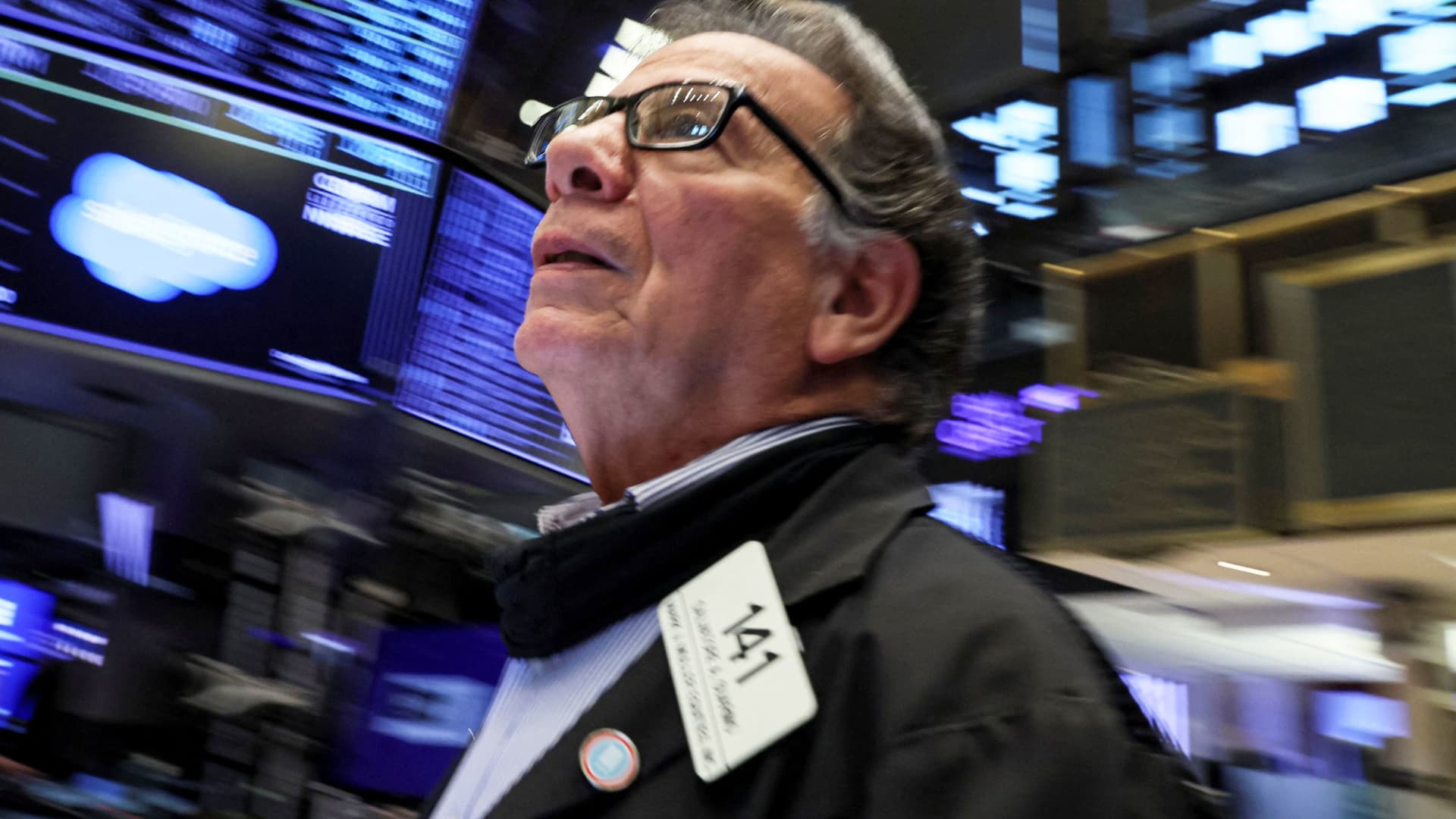This is the daily notebook of Mike Santoli, CNBC’s senior markets commentator, with ideas about trends, stocks and market statistics. The fifth S & P 500 rally of more than 5% since the Jan. 3 market peak is underway. The index is more than 8% higher than the intraday low for this downturn set a week ago. The prior four faltered and gave way to a further slide to new lows. Does the current rebound look more likely to stick? The latest bounce came from the 20% downturn level, though so far we’ve not closed under that threshold, giving this retreat a chance to become the fifth since 1990 that stopped just ticks short of a 20% closing decline (1990, 1998, 2011, 2018 are the others). This history is now well known and for sure the tactical algorithms are aware. It’s unclear if this is a relevant input or just a parlor game, but so far it’s sticking. We entered the week on a rare seven-week losing streak, so mean-reversion itself was the bulls’ ally. Post-options expiration and month-end factors also net positive. While volumes aren’t heavy (they almost never are on rallies, by the way) the three-day advance is happening on very broad participation, 80%+ upside volume since Wednesday. Pushing above last week’s high (roughly 4,090 on the S & P 500) is a modest plus. The move is coming off the lowest valuations since the Covid crash, with the market absorbing some ambiguous retail and tech results and investors making at least a temporary peace with the outlook for Federal Reserve tightening. All to the good, but nothing here liberates the market from either the nagging echoes of the post-2000 Nasdaq Composite slow-motion demolition or the sense that the Fed is resolute in snugging up financial conditions if the markets loosen them too much for their liking. If the S & P 500’s current level near 4,120 rings a bell, it could be because it was for a time the intraday low held in mind by traders for two full months, set the day Russia invaded Ukraine: Feb. 24. A reminder both that this has been grinding on for nearly five months at the big-cap index level (more like 15 months for speculative growth stocks) and that the market has merely clawed back to levels that once were seen as a “must hold” on the downside. The consensus seems to be that this is a bear-market rally unlikely to lead much higher. This is both plausible and prudent, and also it’s not a bad thing for stocks to have the reservoir of skepticism staying pretty full. Yet – as asked here Thursday — after months when dip-buyers were run over and demoralized, might the “rally sellers” be due for a stiffer test of their conviction? More important for most than whether this is a pop to sell or chase is whether the correction has rebuilt value in a way that has improved the risk/reward bargain for longer-term investors. Fair to call valuations – both absolute and relative to bond yields – as neutral rather than genuinely cheap, not back above 17-times year-ahead earnings after bottoming at 16.5. The pendulum often swings right through “fair value” in pressured markets, but sometimes it spends very little time at “cheap” readings. In the early 2016, late 2018 and early 2020 sell-offs, the S & P 500 spent mere weeks below 16-times forward earnings before bobbing higher. Yes, if we’re on indefinite recession watch and profit forecasts are going to be hacked lower, stocks could chase earnings lower, but it’s not clear there’s a magic valuation zone we’re headed to for sure. Is sentiment/positioning still depressed enough to provide fuel for a re-risking rally? Probably, as gauged both by surveys and Bank of America’s bull and bear gauge, which is based on several market-based flow, positioning and credit indicators. Of course, this gauge has stayed low for extended stretches as markets struggled, but in non-crisis periods low readings have tended to insulate the markets from immediate, large and lasting further declines. The personal consumption expenditures inflation numbers this morning were largely as expected. With a third straight month-over-month core PCE of 0.3% and the annualized core figure now under 5%, this offers cover for those willing to assume the “peak inflation” story has legs. Energy prices are not cooperating with this view, but the ongoing shift to services spending from goods should help in the near term, as the labor market cools with hiring slowdowns at big and small companies. We are through a bumpy earnings season. Month-end forces should dissipate around now. It’s more than two weeks until the next Fed meeting, and it’s unclear if the coming jobs number will be a major market mover. The tape has been quite thin and illiquid, air pockets above and below. It probably will stay that way as unofficial summertime trading gets underway. Market breadth, as noted, is again strong, 80% upside NYSE volume and more new highs than lows. Credit continues to rally, risk spreads stepping back from the brink of more worrying levels. VIX is soft, both with higher index levels, more muted intraday moves and the coming three-day weekend suppressing expected volatility – making the case that it’s safer to relax. We’ll see next week if indeed it is.

